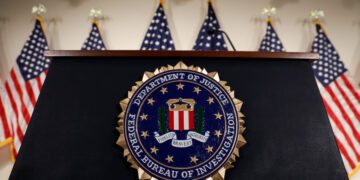By Nancy Thorner -
Hoaxes, although not new, are meant to scare people mostly for the benefit of those who perpetuate them. The word "hoax" has been used since the late 1700s. It began as a shortened version of the verb hocus, which meant “to cheat" or “to impose upon."
A hoax occurs when a person or group of people purposefully make up a false story and pass it off as the truth. Hoaxes are different from simple misunderstandings or jokes because they are deliberate attempts to deceive others.
Hoaxes can be created for a variety of reasons. While some people create hoaxes to try to defraud people, others create hoaxes to embarrass people (especially politicians), encourage social or political change by raising awareness of an issue, or promote a product by generating free marketing and advertising via the hoax.
Following are examples of hoaxes that some readers of this article were most likely duped by:
- Saturated fats have been assumed to cause heart disease by raising cholesterol in the blood. However, no experimental evidence has ever directly linked saturated fat to heart disease.
- The Keto diet — a low-calorie, high-fat eating plan touted by celebrities and Instagrammers alike — aims to activate the metabolic process called ketosis, when our bodies use fat for energy instead of sugar. Followers say it's helped them lose weight and gain energy, and they still get to eat bacon and butter. Read here the 5 most common arguments for the Keto Diet, debunked.
- Millions were fooled into thinking that eating chocolate resulted in weight loss. "Slim by Chocolate!” the headlines blared. A team of German researchers had found that people on a low-carb diet lost weight 10 percent faster if they ate a chocolate bar every day.
- In 2003, President Bush reaffirmed the vision of a world running on hydrogen later on in this century. He even offered a presidential primer on the scientific, economic, and foreign-policy dimensions of hydrogen power. Unfortunately, the promise of a hydrogen age was all pure bunk.
- “Alar apple scare” of 1989 was a hoax based on junk science perpetrated by the Natural Resources Defense Council, Consumer’s Union, 60 Minutes on CBS, and the actress Meryl Streep.
Roundup as cancer causing agent?
“There is increasing concern that most current published research findings are false. The probability that a research claim is true may depend on study power and bias, the number of other studies on the same question, and, importantly, the ratio of true to no relationships among the relationships probed in each scientific field.” . . . “Simulations show that for most study designs and settings, it is more likely for a research claim to be false than true. Moreover, for many current scientific fields, claimed research findings may often be simply accurate measures of the prevailing bias.”
IARC lists human carcinogens in the following groups: Human carcinogens (group 1); probable human carcinogens (group 2A); or possible human carcinogens (group 2B).
Group 1: Known human carcinogens are many and are listed here in alphabetical order.
Group 2A: Check here for "probable" human carcinogens.
Group 2B: "Possible" human carcinogens include sunshine, mobile phones, alcoholic beverages, wood dust, coffee, outdoor pollution, working as a hairdresser, wood smoke, night shifts, hot yerva mate tea, red meat–and the herbicide glyphosate.
Only the glyphosate designation has led to worldwide protests by advocacy groups and concern by government agencies in some countries, particularly in Europe. The risk/hazard distinction confuses the public and even some regulatory agencies and is exploited by activist groups who often want to portray relatively safe products as dangerous.
Ads blast Roundup
When watching nighttime Fox TV, an ad accusing Roundup of causing cancer is often run more than once during a single Fox show. This is particularly true for the Tucker Carlson show. The ad against Monsanto's Roundup narrated by Robert Kennedy Jr. grates me the most. Now I am starting to get ads warning about Roundup in my Inbox, such as this one from a few days ago in three sections:
More about ROUNDUP
Roundup® is one of the most widely used herbicides in the U.S. and is manufactured by Monsanto Corporation. Millions of consumers have used the weed killer in their home gardens and lawns since it was introduced in 1976 and, unfortunately, it has been found to contain harmful chemicals that may cause cancer to those exposed to it. Millions more acres of farmland have been doused in Roundup® to control weeds and other pests. The active chemical ingredient in Roundup® is glyphosate which has been deemed “probably cancerous” by the International Agency for Research on Cancer and numerous studies have been published linking the herbicide to a form of blood cancer called Non-Hodgkin Lymphoma (NHL). People who work with the herbicide on a regular basis are possibly most at risk for Roundup® exposure and could beat an increased risk for adverse side effects.
Signs & Symptoms
Some people who have been exposed to Roundup® have developed a form of blood cancer called Non-Hodgkin Lymphoma (NHL). The cancer begins in the body’s lymphatic system, part of the circulatory system and an important part of the immune system. It can affect either the B cells or T cells (both types of white blood cells).
Take Action
A California jury recently ordered Monsanto to pay $2 Billion million for not warning of cancer risks from the company's weed-killer Roundup®.
If you or a loved one have been diagnosed with Non-Hodgkin’s Lymphoma (NHL) after being exposed to the popular weed & grass killer Roundup® you need to speak up! You might be eligible for financial compensation for your pain and suffering. Don’t suffer in silence. Fill out a no-cost claim review to see if you are eligible to receive compensation. – complete the free and easy claim review form today.
Truth about Roundup
This article from Cornwall Alliance relates how California judges provided the stage for kangaroo court justice over Roundup weed killer.
"San Francisco area juries have awarded cancer patients some $80 million each, based on claims that the active ingredient in Roundup weed killer, caused their cancer – and that Bayer-Monsanto negligently or deliberately failed to warn consumers that the glyphosate it manufactures is carcinogenic. (It’s not.) Judges reduced the original truly outrageous awards of $289 million and even $1 billion per plaintiff!
Ubiquitous ads are still trolling for new clients, saying anyone who ever used Roundup and now has Non-Hodgkin Lymphoma or other cancer could be the next jackpot justice winner. Mass tort plaintiff law firms have lined up 18,500 additional “corporate victims” for glyphosate litigation alone.
Introduced in 1974, glyphosate is licensed in 130 countries. Millions of farmers, homeowners and gardeners have made it the world’s most widely used herbicide – and one of the most intensely studied chemicals in history. Four decades and 3,300 studies by respected agencies and organizations worldwide have concluded that glyphosate is safe and non-carcinogenic, based on assessments of actual risk.
Reviewers include the U.S. Environmental Protection Agency, European Food Safety Authority, European Chemicals Agency, UN Food and Agriculture Organization, Germany’s Institute for Risk Assessment, and Australia’s Pesticides and Veterinary Medicines Authority. Another reviewer, Health Canada, noted that “no pesticide regulatory authority in the world considers glyphosate to be a cancer risk to humans at the levels at which humans are currently exposed.” Therefore, no need to warn anyone.
The National Cancer Institute’s ongoing Agricultural Health Study evaluated 54,000 farmers and commercial pesticide applicators for over two decades – and likewise found no glyphosate-cancer link.
Only the France-based International Agency for Cancer Research (IARC), says otherwise – and it based its conclusions on just eight studies. Even worse, IARC manipulated at least some of these studies to get the results it wanted. Subsequent reviews by epidemiologist Dr. Geoffrey Kabat, National Cancer Institute statistician Dr. Robert Tarone, investigative journalist Kate Kelland, “RiskMonger” Dr. David Zaruk and other investigators have demonstrated that the IARC process was tainted beyond repair.
The IARC results should never have been allowed in court. But the judges in the first three cases let the tort lawyers bombard the jury with IARC cancer claims and went even further. In the Hardeman case, Judge Vincent Chhabria blocked the introduction of EPA analyses that concluded “glyphosate is not likely to be carcinogenic in humans,” based on its careful review of many of the studies just mentioned."
Inadequate courtroom questioning and blocked exculpatory evidence
The Cornwell Alliance article goes on to explain how a line of questioning in the courtroom proceedings would have put glyphosate and Roundup in a very different light and might have changed the outcome of the trials, had the claimants been asked how many times they were exposed to Human carcinogens in Group 1; or probable human carcinogens in Group 2A; or possible human carcinogens in Group 2B?
In other words, how did you, your doctors, your lawyers and the experts you consulted concluded that none of your family history … none of your lifestyle choices … none of your exposures to dozens or even hundreds of other substances on Federal District Courts have let misconduct by plaintiff lawyers drive these lawsuits; prevented defense attorneys from effectively countering IARC cancer claims and discussing the agency’s gross misconduct; and barred defense attorneys from presenting the extensive evidence that glyphosate is not carcinogenic to human?
Jackpot-justice law firms and their anti-chemical activist allies are already targeting cereals that have “detectable” levels of glyphosate: a few parts per billion or trillion, where 1 ppt is equivalent to 1 second in 32,000 years. Talc and benzene – foundations for numerous consumer products – are already under attack. Advanced technology neonicotinoid pesticides could be next.
Questions continue as to whether the Roundup scare is all part of a coordinated, well-funded attack on America, free enterprise and technology, using social media, litigation, intimidation and confrontation.
If it is indeed another hoax, our legislatures and courts need to rein it in.







